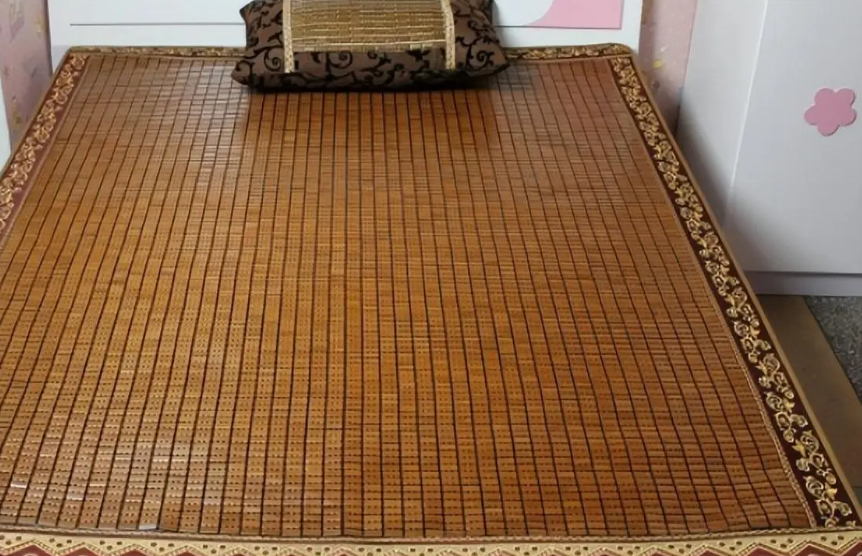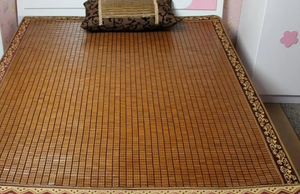
Couch inspection methods and inspection standards; Inspection, factory inspection and certification services
The cold winter season inevitably evokes memories of the cool and comfortable feeling when lying on a mat in summer. Mats are seasonal household items with various types, such as straw mats, bamboo mats, rattan mats, linen mats, cowhide mats, gel mats, etc. With so many diverse products on the market, how can one ensure that their quality meets the requirements? As a purchaser, inspector, or quality control personnel, one should master scientific inspection methods and inspection standards. This article will focus on the inspection process of mats, combined with the key quality inspection items in factory inspection and verification, to introduce the inspection standards and operational key points of mats, providing practical references for product quality control and factory inspection audits.
I. Scope of Application
This standard is applicable to all types of mat products, including straw mats, bamboo mats, rattan mats, linen mats, cowhide mats, and new gel mats, covering the entire process of quality control from raw materials, production processes to finished product packaging.
II. Standards and Regulatory Requirements for Inspection
The inspection of mats shall be conducted in accordance with national, industry and enterprise standards, mainly including:
DB61/T 477-2009: "Mattresses"
GB 18401-2010: National Technical Specifications for Basic Safety of Textile Products (Class C, Products Not in Direct Contact with Skin)
GB/T 2828.1-2012: Counting Sampling Inspection Procedures (for determining AQL sampling schemes)
Process documents and sample approval: Technical specifications provided by the customer and sample standards
During the factory inspection, it is also necessary to pay attention to whether the enterprise has a complete quality management system (such as ISO 9001), as well as the standardization of raw material procurement, production process control and final inspection.
III. Physical Properties and Safety Inspection
The bedspread not only needs to have an attractive appearance, but also must possess certain physical properties and usage safety. The key inspection items include:
pH value: It should be between 4.0 and 8.5, and avoid causing skin allergies.
Moisture content: Controlled within 7% - 20% to prevent mold growth or brittleness.
Fastness to color: Color fading and color difference should reach grades 5 to 7 (compared using a color chart).
Anti-mildew property: The anti-mildew test lasted for no less than 3 days, and no mold spots appeared.
Bending radius of bamboo strips in the direction of fracture: Should be ≤ 5 cm.
Gluing strength: The gluing strength between bamboo strips and gauze ≥ 0.3 MPa.
Formaldehyde content: It should comply with the Class C limit requirements of GB 18401 (≤ 300mg/kg).
IV. Appearance Quality Inspection
1. Specification and Dimension Deviation:
Squareness: Diagonal deviation ≤ 4 cm
Width deviation: ±2cm
Length deviation: ±2cm
2. Appearance Quality:
Color and Color Change:
Grade A: Uniform color, slight greying, color spots diameter ≤ 4cm
Grade B: The colors are roughly similar, with more blue tones, and the diameter of the color spots is no more than 6 cm.
Roughness and flatness: The surface is smooth and free of burrs. The bamboo mat is allowed to have 7-8 minor depressions.
Unacceptable defects: Moldy layers, insect holes, decay, glue leakage, reverse strips, broken strips are all strictly prohibited.
Gap requirements:
Average voidage ≤ 0.1 cm
The local void length is ≤ 3 cm. There are no more than 12 instances of grade A and no more than 18 instances of grade B.
V. Craftsmanship and Sewing Quality
Sewing Path: Should be smooth, straight, and sturdy. The hemming and stitching should be smooth, straight, and uniform in width, without any loose edges.
Thread density: For straight stitching, it is 3 to 5 stitches per 3 cm.
Edge finishing quality: The edge is smooth and uniform in width, tightly adhering to the seat edge, with no exposed wire ends.
Labels and Markings:
The content of the washing label must include three major items: specifications, fiber composition, and washing instructions.
The trademark is consistent with the product, and all the labels comply with the requirements of the sales region.
VI. Testing Methods and Tools
Sampling Plan: Follow GB/T 2828.1. Common AQL levels: Critical 0, Major 2.5, Minor 4.0
Test environment: Under natural light or equivalent light source, with a visual distance of 30 - 40 cm.
Common Tools:
Measuring tape (for measuring dimensions)
Calipers, plug gauges (for measuring gaps and thickness)
pH meter, moisture content tester
Color fastness test card, bending test apparatus
VII. Common Defects and Judgement Criteria
Defect Type Concrete Manifestation Judgement Criteria
Packaging and Labeling Defects Lack of washing labels, language errors, inaccurate ingredient labeling Severe Defect (Critical)
Appearance Defects Obvious color difference, mold spots, insect holes, broken strips, glue leakage Primary Defect (Major)
Process Issues Non-parallel stitching, uneven edge wrapping, insufficient stitch density Secondary Defect (Minor)
Physical Performance Unqualified PH value exceeds standard, abnormal moisture content, insufficient bonding strength Severe Defect (Critical)
Single-piece Judgement: All items meeting the requirements are classified as first-grade products; any one item not meeting the requirements results in a downgrade.
Batch determination: According to the sampling plan, a batch is considered qualified if the number of non-conformities is less than or equal to Ac, and it is considered non-qualified if it is greater than or equal to Re.
VIII. Key Points for Factory Audit
If a factory audit is conducted, in addition to product inspection, the following aspects should also be given priority attention:
Raw material control: Whether to conduct incoming inspection on materials such as fabric, gauze, and binding strips;
Production process: Are there operation procedures manuals (SOPs)? Is the adhesive in compliance with environmental protection requirements?
Process inspection (IPQC): Whether quality inspection points are set up at positions such as weaving, edge binding, and sewing;
Final inspection and testing: Is there a random physical performance test and a comprehensive appearance inspection for each batch?
Traceability system: Whether it can achieve full-process traceability from raw materials to finished products for shipment.
Conclusion
Although mats are traditional household products, their quality directly affects the usage experience and health and safety. Through a systematic inspection process, clear inspection standards, and scientific sampling methods, the quality of the products can be effectively controlled, reducing trade disputes. It is recommended that purchasers and inspectors conduct a comprehensive assessment of product compliance before factory inspection and shipment to ensure that they meet national standards and customer requirements, providing consumers with a safe and comfortable summer companion.
分享这个商品

Couch inspection methods and inspection standards; Inspection, factory
Recalling the cool and comfortable feeling of lying on the mat in the summer. Mats, as seasonal household items, come in a wide variety of types.
